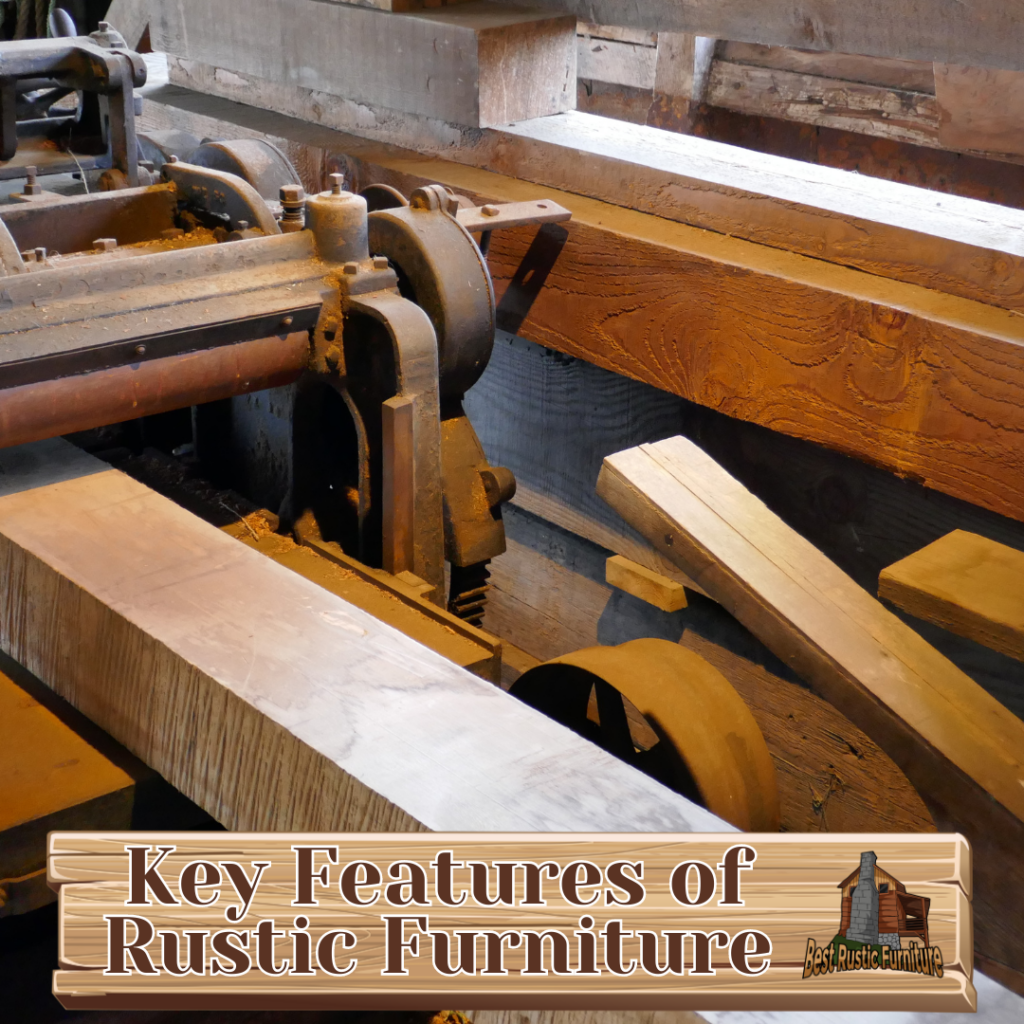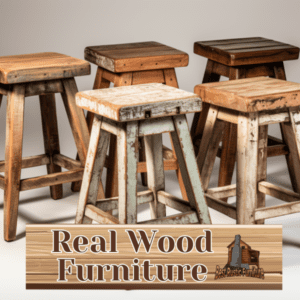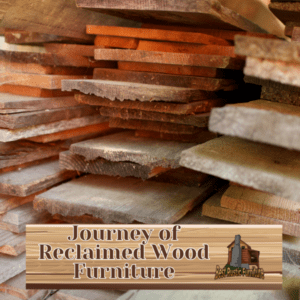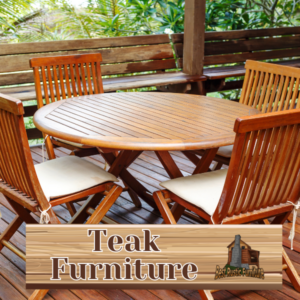
Rustic furniture is a style of furniture that exudes a warm and inviting charm, with a strong emphasis on natural elements and traditional craftsmanship. It adds character and a sense of nostalgia to any space, creating a cozy and welcoming atmosphere. Understanding the key features of rustic furniture is essential to appreciate its unique appeal and learn how to incorporate it into various interior styles.
To define rustic furniture, we must first understand what sets it apart. Rustic furniture is characterized by its use of natural materials such as wood, stone, and metal. It often features distressed and weathered finishes that give it a timeworn and aged look. Handcrafted details and artisanal touches further enhance its authenticity and charm. Rustic furniture also highlights the beauty of wood grain and texture, showcasing the natural imperfections and knots of the material. Finally, rustic furniture is known for its simple and functional designs that prioritize both aesthetics and usability.
The appeal of rustic furniture lies in its ability to create a cozy and warm atmosphere. By incorporating rustic elements into interiors, it brings a touch of nature indoors, connecting people to the natural world. Rustic furniture also reflects a nostalgic and timeless style that evokes a sense of heritage and tradition.
Blending rustic furniture with different interior styles can be a creative way to personalize spaces. Rustic-chic combines rustic and contemporary elements, striking a balance between rustic warmth and modern sophistication. Rustic-industrial merges rustic and industrial design, combining rugged materials with a touch of urban style. Rustic-farmhouse incorporates rustic elements into farmhouse interiors, creating a welcoming and relaxed country feel.
Key takeaways:
- Natural materials: Rustic furniture is characterized by the use of natural materials like wood and stone, giving it a natural and organic feel.
- Distressed and weathered finishes: The furniture often features distressed and weathered finishes to create a rustic and aged look, adding character and charm to the pieces.
- Handcrafted and artisanal touches: Many rustic furniture pieces are handcrafted and showcase artisanal techniques, making them unique and one-of-a-kind.
Understanding Rustic Furniture
Understanding rustic furniture involves analyzing its origins, design elements, and characteristics.
Rustic furniture is deeply rooted in traditional craftsmanship and can be traced back to the early settlers and pioneer days.
It prominently features natural materials like wood, stone, and leather, embracing imperfections and showcasing the beauty of knots, grains, and rough textures.
This type of furniture is recognized for its simplicity, durability, and functionality, creating a warm and cozy ambiance that evokes a sense of nostalgia and connection to nature.
What Defines Rustic Furniture?
Rustic furniture is defined by its use of natural materials, distressed finishes, handcrafted touches, emphasis on wood grain and texture, and simple yet functional designs. What defines rustic furniture is its ability to capture the essence of nature and evoke a sense of rustic charm and authenticity. This style of furniture reflects a nostalgic and timeless aesthetic, creating a cozy and warm atmosphere in any space. Rustic furniture brings nature indoors, incorporating elements such as reclaimed wood and earthy colors. It can be blended with different interior styles, such as rustic-chic, rustic-industrial, and rustic-farmhouse, to add character to any home.
History and Origins of Rustic Furniture
The history and origins of rustic furniture can be traced back to ancient civilizations. In those times, early humans ingeniously utilized natural materials like wood and stone to craft functional pieces for their abodes. As the years rolled by, diverse cultures emerged, each with their distinct styles. For instance, the American pioneers favored simple and robust designs, whereas European craftsmen indulged in intricate carvings. Even today, rustic furniture continues to captivate hearts with its nostalgic allure and close association with nature. An exemplary illustration of this lies in the tradition of barnwood furniture in the United States. Here, aged barns are ingeniously repurposed to fashion breathtaking and ecologically sustainable pieces of rustic furniture.
Key Features of Rustic Furniture
Discover the enchanting world of rustic furniture as we delve into its key features. From the use of natural materials to the artistry of handcrafted touches, each sub-section will unravel the essence of rustic charm. Get ready to explore the allure of distressed and weathered finishes, and the unique emphasis on wood grain and texture. Prepare to be captivated by the beauty of simple and functional designs. Welcome to a journey where aesthetics speak volumes in the realm of rustic furniture.
Natural Materials
Natural materials are a defining characteristic of rustic furniture, adding warmth and authenticity to any interior space. When choosing rustic furniture, look for pieces made from:
- Solid wood, such as oak, pine, or cedar, which showcase the natural beauty of the grain.
- Reclaimed wood, which adds a unique and eco-friendly touch.
- Stone or marble, which provide a sturdy and earthy element.
- Leather or natural fabrics, which offer a comfortable and organic feel.
A pro-tip when incorporating natural materials into rustic furniture is to mix and match different materials to create visual interest and texture in your decor.
Distressed and Weathered Finishes
Distressed and weathered finishes are essential elements that define the rustic furniture style. These finishes are responsible for adding character and charm to the pieces, creating an aged and worn appearance. To achieve these unique finishes, various techniques can be employed:
- Sanding: Rough sanding is utilized to intentionally create scratches and imperfections on the furniture’s surface.
- Staining: Dark stains are frequently applied to imitate the look of weathering and age.
- Painting: Multiple layers of paint with different colors are carefully applied and then partially removed, resulting in a beautifully distressed look.
- Distressing tools: Tools such as hammers, chains, and chisels are skillfully used to deliberately create intentional dents, dings, and marks on the furniture.
- Finishing touches: To protect the finish and add a subtle sheen, wax, varnish, or sealants may be carefully applied.
By employing these techniques, one can successfully achieve the desired distressed and weathered finishes that give rustic furniture its unique and appealing look.
Handcrafted and Artisanal Touches
Handcrafted and artisanal touches are integral components of rustic furniture, infusing it with a sense of authenticity and character. These distinctive details are masterfully integrated using a variety of techniques and materials. Here are some notable examples:
- Hand-carved details: Highly skilled artisans meticulously create intricate designs and patterns, resulting in breathtaking craftsmanship.
- Hand-forged metal accents: Iron, brass, or copper elements are meticulously shaped and hammered by hand, lending a rugged and time-honored aesthetic.
- Hand-stitched upholstery: With utmost care, top-notch fabrics are artfully sewn, providing furniture with a delightful, handcrafted allure.
- Hand-rubbed finishes: Adhering to age-old traditions, craftsmen carefully apply stains and oils by hand, enriching the innate beauty of the wood grain.
- Artisanal hardware: Exhibiting boundless imagination and superb artistry, distinctive knobs, pulls, and hinges are expertly fashioned by skilled hands.
These meticulously crafted handcrafted and artisanal touches bestow a truly exceptional quality upon each piece, thereby heightening the allure and value of rustic furniture.
Emphasis on Wood Grain and Texture
The beauty of rustic furniture lies in its emphasis on wood grain and texture, which adds charm and character to any space. Here are some compelling reasons why the emphasis on wood grain and texture is so significant:
- Natural beauty: One of the key features of rustic furniture is its ability to showcase the unique patterns and textures of wood grains, creating an organic and visually appealing look.
- Warm and inviting: The warmth emitted by the wood adds a cozy atmosphere to any room, making it feel comfortable and inviting.
- Authenticity: The visible grain and texture of the wood truly highlight the natural qualities it possesses, contributing to the authenticity of rustic furniture.
- Visual interest: The variation in grain patterns and textures adds depth and visual interest to each furniture piece, making it a captivating addition to any space.
- Timeless appeal: Wood grain and texture possess a timeless quality that surpasses trends, offering a long-lasting choice for any interior style.
Fact: Did you know that the age and type of tree greatly influence the grain pattern and texture of the wood, resulting in one-of-a-kind and unique furniture pieces?
Simple and Functional Designs
Simple and functional designs are the key features that define rustic furniture. These designs prioritize efficiency and practicality while maintaining a charming aesthetic.
- Minimalistic shapes: Rustic furniture often showcases clean and straightforward lines, focusing on essential elements and avoiding unnecessary ornamentation.
- Multipurpose functionality: Many rustic pieces serve multiple purposes, such as storage chests that can also function as coffee tables or benches equipped with built-in storage compartments.
- Durable construction: Functionality is reinforced by using robust materials and sturdy craftsmanship, guaranteeing that the furniture can endure everyday usage for many years.
Pro-tip: When choosing rustic furniture, consider how it can enrich your daily life by offering both functionality and a rustic appeal to your space.
The Appeal of Rustic Furniture
With its undeniable charm and timeless appeal, rustic furniture has captivated interior design enthusiasts and nature lovers alike. In this section, we will uncover the irresistible allure of rustic furniture, exploring how it effortlessly creates a cozy and warm atmosphere. We’ll also discover how it brings the beauty of nature indoors, infusing our living spaces with a touch of organic harmony. We’ll explore how rustic furniture reflects a nostalgic and timeless style, evoking a sense of history and heritage. Prepare to be inspired by the rustic elegance that awaits!
Creating a Cozy and Warm Atmosphere
Creating a cozy and warm atmosphere is one of the main appeals of rustic furniture. Here are some ways to achieve this:
- Choose warm colors: Opt for earthy tones like browns, beiges, and deep reds to create a cozy feel.
- Add soft textures: Incorporate plush pillows, cozy throws, and fluffy rugs to add warmth and comfort.
- Use natural materials: Embrace the natural elements by selecting furniture made from wood, stone, or metal for a rustic and warm ambiance.
- Add ambient lighting: Incorporate warm and soft lighting fixtures like pendant lights or table lamps to create a cozy and inviting atmosphere.
- Bring in nature: Decorate with plants, flowers, or natural elements like wooden branches to connect with the outdoors and create a warm and inviting space.
Pro Tip: To enhance the cozy atmosphere, consider incorporating a fireplace or a wood-burning stove as a focal point in the room.
Bringing Nature Indoors
Bringing nature indoors is a fundamental aspect of rustic furniture. This design style fully embraces the use of natural materials such as wood, stone, and rattan to establish a strong connection with the outdoors. Here are several ways in which rustic furniture effectively brings nature into your living space:
- Utilizing natural materials like wood, stone, and rattan
- Incorporating live plants or botanical motifs in your decor
- Showcasing the exquisite beauty of wood grain and texture in furniture pieces
- Addition of a natural color palette encompassing earthy tones and hues
- Integration of organic shapes and forms in furniture designs
Reflecting a Nostalgic and Timeless Style
Rustic furniture reflects a nostalgic and timeless style that goes beyond trends. Here are some key aspects that capture this:
- Weathered and distressed finishes that evoke a sense of history and age, reflecting a nostalgic and timeless style.
- Use of natural materials like wood, stone, and metal, which connect us to the past and nature, reflecting a nostalgic and timeless style.
- Handcrafted and artisanal touches, showcasing the craftsmanship and attention to detail, reflecting a nostalgic and timeless style.
- Emphasis on wood grain and texture, enhancing the rustic look and feel, reflecting a nostalgic and timeless style.
- Simple and functional designs that focus on practicality without sacrificing charm, reflecting a nostalgic and timeless style.
Blending Rustic Furniture with Different Interior Styles
Blending the charm of rustic furniture with various interior styles takes your home decor to a whole new level. Explore the art of seamlessly incorporating rustic elements into different design concepts. From rustic-chic to rustic-industrial and rustic-farmhouse, each sub-section delves into the perfect fusion of rustic aesthetics with contemporary, industrial, and farmhouse interiors. Get ready to infuse your living spaces with character and warmth that beautifully harmonize with your personal style.
Rustic-Chic: Combining Rustic and Contemporary Elements
Rustic-chic, the art of seamlessly blending rustic and contemporary elements, has become an increasingly popular interior design style. By incorporating neutral color palettes such as white, beige, and gray, a touch of contemporary elegance can be introduced. To achieve this style, consider pairing rustic elements like reclaimed wood or natural stone with sleek materials such as glass or metal. Adding eclectic accents like minimalist lighting fixtures or abstract artwork can create a striking contrast with the rustic components. To strike the perfect balance, incorporate modern furniture pieces with clean lines that can beautifully complement the rustic charm. The key is to maintain a sense of harmony and cohesion by consistently integrating both rustic and contemporary elements throughout the space. For an enhanced rustic-chic vibe, consider adding plants and incorporating natural textures like woven baskets or fur rugs.
Rustic-Industrial: Merging Rustic and Industrial Design
Merging rustic and industrial design elements can create a unique and stylish interior aesthetic. Here’s how you can achieve the rustic-industrial look:
- Use reclaimed materials: Incorporate reclaimed wood, metal, and other salvaged materials to bring an industrial feel to rustic furniture with a rustic-industrial touch.
- Add an industrial touch: Include metal accents such as exposed pipes, metal legs, or hardware on rustic furniture pieces to infuse an industrial vibe and enhance the rustic-industrial design.
- Mix textures: Combine distressed wood with raw metal finishes for a harmonious blend of rustic and industrial textures, creating a rustic-industrial ambiance.
- Play with lighting: Use pendant lights with vintage-inspired bulbs or industrial-style fixtures to enhance the rustic-industrial ambiance and add warmth to the space.
- Accessorize strategically: Incorporate vintage signs, metal shelves, or wire baskets to add industrial charm to rustic spaces and complete the rustic-industrial look.
Rustic-Farmhouse: Incorporating Rustic in Farmhouse Interiors
Inclusion of Rustic-Farmhouse Style in Farmhouse Interiors
By seamlessly blending rustic elements into farmhouse interiors, you can effortlessly create a delightful and snug atmosphere. Here are some vital factors to consider while incorporating the rustic-farmhouse style:
- Opt for furniture pieces made from reclaimed wood, such as dining tables, chairs, and cabinets, to add an authentic touch.
- Enhance the rustic ambiance by embracing natural, earthy color schemes like browns, greens, and creams.
- Infuse vintage-inspired accessories like barn doors, mason jar lighting fixtures, and antique farm tools as charming decorative accents.
- Embrace farmhouse-inspired textiles like gingham or floral patterns for curtains, tablecloths, and throw pillows, creating a cozy and inviting feel.
- Incorporate rustic elements into the kitchen through the integration of open shelving, farmhouse sinks, and distressed wood cabinets.
By infusing these rustic-farmhouse elements, you can effortlessly achieve a warm and inviting ambiance within your farmhouse interiors.
Some Facts About Defining the Aesthetics: Key Features of Rustic Furniture:
- ✅ Rustic interior design embraces rugged, natural, and aged elements.
- ✅ Rustic furniture is characterized by its handmade and simple design.
- ✅ The color palette of rustic furniture is neutral with earthy tones.
- ✅ Rustic design aims to create a warm and inviting atmosphere.
- ✅ Rustic modern design combines industrial, mid-century, and rustic styles.
Frequently Asked Questions
What is rustic interior design and its connection to nature?
Rustic interior design embraces the beauty of ruggedness and focuses on natural, rough, and aged elements. It incorporates a sense of peace and simplicity in a space. Rustic design styles, such as modern rustic and coastal, share a focus on raw, natural beauty. It aims to create a warm and inviting atmosphere, often centered around natural elements that remind one of nature, such as aged wood, natural stone, and organic fibers.
How did the rustic interior design style originate?
The rustic style originated from settlers who built their homes far away from cities during the 1900s. These settlers had limited space and resources, so they built their homes using local materials and made their furniture from scratch. Rustic interior design is a remembrance of simpler times and carries the essence of the countryside cottage and traditional country homes.
What are the defining features of rustic furniture?
Rustic furniture is typically handmade, simple in design, and oversized for a cozy and comfortable feel. It often incorporates raw materials like aged wood and natural stone. The furniture has a roughness to it, with a lack of refined details, highlighting the raw beauty and ruggedness of the materials used. Textiles used in rustic furniture are raw and lack sheen, such as jute or animal hide.
How does rustic design incorporate modern elements?
In a more modern rustic style, there may be modern furniture and amenities, an open floor plan, and exposed architectural elements. Contemporary rustic design combines earthy elements with clean-lined modern design for a fresh and natural aesthetic. It allows for a fusion of rustic allure and the practical and functional interiors of a modern urban apartment or a Tuscan-style estate.
How does rustic furniture connect to the outdoors?
Rustic furniture is inspired by nature and seeks to bring the outdoors inside. It uses organic elements like raw logs, rough elements, and natural forms. The use of materials like aged wood and stone gives a sense of natural roots. The design often emphasizes open spaces, large windows, and the connection to the outdoors, creating an inviting living space that highlights the beauty of the surrounding environment.
What were the influences behind the development of rustic furniture?
The development of rustic furniture was influenced by the Transcendentalism movement, which emphasized self-reliance, intuition, and unity with nature. Prominent figures like Ralph Waldo Emerson, Henry David Thoreau, and John Muir championed a connection to the outdoors and the individual conscience. Rustic furniture reflects this philosophy, bringing a sense of simplicity, natural beauty, and harmony with nature into the home.






